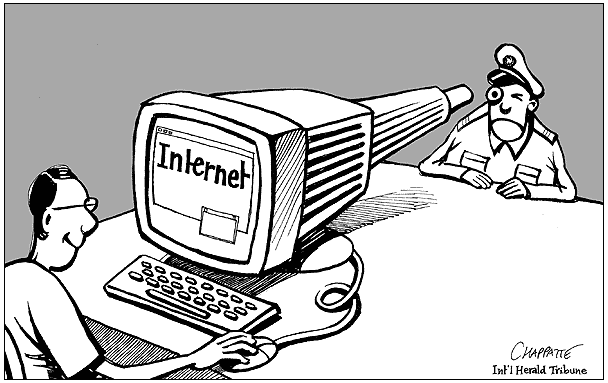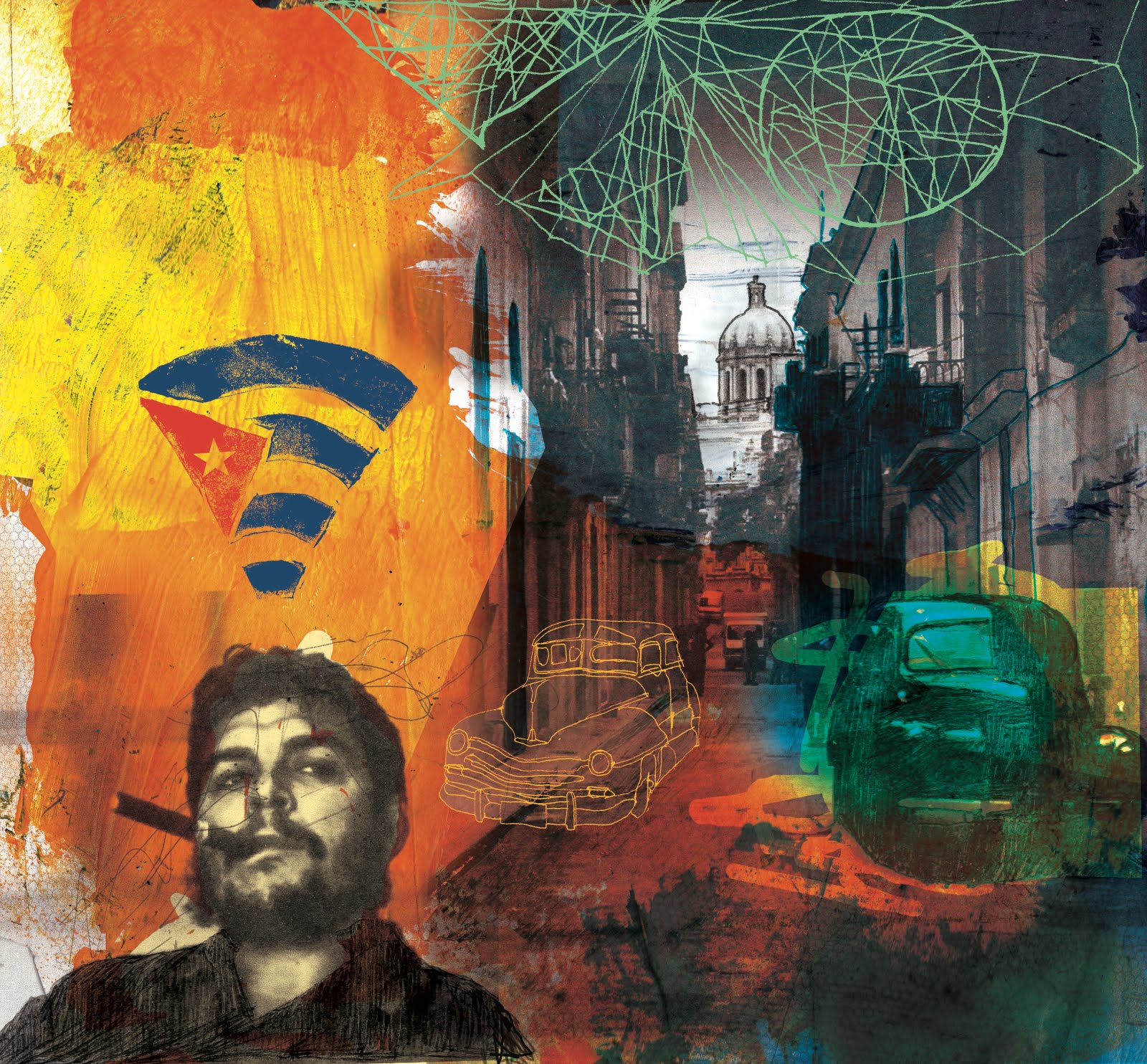In
Mobile Interface Theory: Embodied Space and Locative Media, Jason Farman discusses the ways in which mobile technologies serve as intermediaries that help to negotiate between material and digital spaces. For Farman, mobile technologies demystify existing binary relationships between material and digital spaces insofar as they are imbued with the capacity for unique and personalized movement across contexts, therefore investing users with profound embodied possibilities.

Admittedly, my current research about Cuban digital literacies has yet to really broach the emergence of mobile technologies in Cuba. That being said, it is important to address the manner in which Farman's tacit celebration of mobile technologies in
Mobile Interface Theory may fall short of addressing unique cultural contexts--like Cuba--where the vast majority of Cuban citizens either do not have access to digital spaces or they are subjected to a level of surveillance and restriction that actively prevents them from seeking out sources that conflict with the Cuban government's ideological apparatus. Cubans, in this sense, are less concerned with reconciling material and digital spaces--as Farman suggests mobile technologies might accomplish--than merely gaining access to digital spaces and locating Cuba and its cultural heritage within a more global context.

Interestingly enough, though, over the last several years Cubans have taken advantage of advancements in data storage--namely, thumb drives--to facilitate data transfer of sources that would otherwise be unavailable to users on the Internet. In so doing, they have mitigated many of the restrictions imposed by the Cuban government on prospective users while delivering content freely and ubiquitously to more and more Cubans who would have otherwise
not had the level of access or the resources to receive and engage with such content.

In gesturing to the prospects for data storage to actively circumvent existing restrictions to digital spaces in Cuba, this raises important questions about what constitutes a mobile technology or a mobile interface. It also highlights the ways in which the scope or Farman's notion of "mobile interface theory" may be limited or hampered by assumptions that distinctions between material and digital spaces may be uniformly exported to different social, cultural, and political contexts. Of course, expanding "mobile interface theory" to include data storage and the like may at the very least begin to speak to a multitude of different contexts, but this is just one example in one context.
 Admittedly, my current research about Cuban digital literacies has yet to really broach the emergence of mobile technologies in Cuba. That being said, it is important to address the manner in which Farman's tacit celebration of mobile technologies in Mobile Interface Theory may fall short of addressing unique cultural contexts--like Cuba--where the vast majority of Cuban citizens either do not have access to digital spaces or they are subjected to a level of surveillance and restriction that actively prevents them from seeking out sources that conflict with the Cuban government's ideological apparatus. Cubans, in this sense, are less concerned with reconciling material and digital spaces--as Farman suggests mobile technologies might accomplish--than merely gaining access to digital spaces and locating Cuba and its cultural heritage within a more global context.
Admittedly, my current research about Cuban digital literacies has yet to really broach the emergence of mobile technologies in Cuba. That being said, it is important to address the manner in which Farman's tacit celebration of mobile technologies in Mobile Interface Theory may fall short of addressing unique cultural contexts--like Cuba--where the vast majority of Cuban citizens either do not have access to digital spaces or they are subjected to a level of surveillance and restriction that actively prevents them from seeking out sources that conflict with the Cuban government's ideological apparatus. Cubans, in this sense, are less concerned with reconciling material and digital spaces--as Farman suggests mobile technologies might accomplish--than merely gaining access to digital spaces and locating Cuba and its cultural heritage within a more global context. Interestingly enough, though, over the last several years Cubans have taken advantage of advancements in data storage--namely, thumb drives--to facilitate data transfer of sources that would otherwise be unavailable to users on the Internet. In so doing, they have mitigated many of the restrictions imposed by the Cuban government on prospective users while delivering content freely and ubiquitously to more and more Cubans who would have otherwise not had the level of access or the resources to receive and engage with such content.
Interestingly enough, though, over the last several years Cubans have taken advantage of advancements in data storage--namely, thumb drives--to facilitate data transfer of sources that would otherwise be unavailable to users on the Internet. In so doing, they have mitigated many of the restrictions imposed by the Cuban government on prospective users while delivering content freely and ubiquitously to more and more Cubans who would have otherwise not had the level of access or the resources to receive and engage with such content. In gesturing to the prospects for data storage to actively circumvent existing restrictions to digital spaces in Cuba, this raises important questions about what constitutes a mobile technology or a mobile interface. It also highlights the ways in which the scope or Farman's notion of "mobile interface theory" may be limited or hampered by assumptions that distinctions between material and digital spaces may be uniformly exported to different social, cultural, and political contexts. Of course, expanding "mobile interface theory" to include data storage and the like may at the very least begin to speak to a multitude of different contexts, but this is just one example in one context.
In gesturing to the prospects for data storage to actively circumvent existing restrictions to digital spaces in Cuba, this raises important questions about what constitutes a mobile technology or a mobile interface. It also highlights the ways in which the scope or Farman's notion of "mobile interface theory" may be limited or hampered by assumptions that distinctions between material and digital spaces may be uniformly exported to different social, cultural, and political contexts. Of course, expanding "mobile interface theory" to include data storage and the like may at the very least begin to speak to a multitude of different contexts, but this is just one example in one context.
Hi Mark,
ReplyDeleteFirst of all, awesome images to accompany your blog post for this week. I really liked the one with the telescope looking into the internet as well as the "@" symbol in chains. Both of these images speak volumes to the whole notion of surveillance and embodiment. Your discussion of what constitutes mobile interfaces is very interesting to me and leaves me to wonder what we mean when we say "mobile" in considering how that might vary across cultures. Certainly a thumb drive would constitute as mobile technology in some aspects, but I wonder about how theories such as reciprocity are navigated in mobile technologies such as that one. I hope you include some of these images in your final project, they're so wonderful! Thanks for sharing!
Lucy
Mark,
ReplyDeleteAs always, excellent and thought provoking post! One question I have stemming from the readings and your post, is how do you find embodiment will be conceived in Cuba? To explain, it seems that Farman's approach is rooted in how North Americans and Europeans perceive embodiment based on their rather unrestricted access to digital spaces. Do you think that Cubans will respond in a similar fashion? Thanks for your post!
Lacy